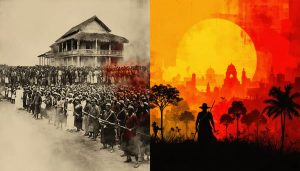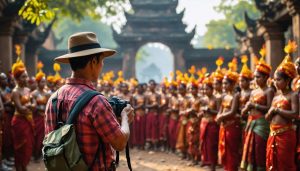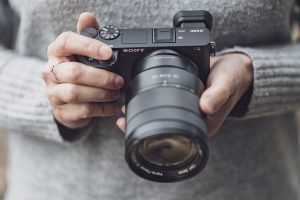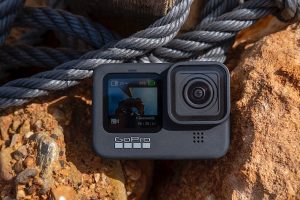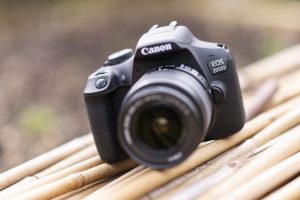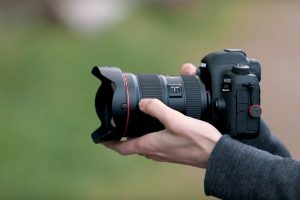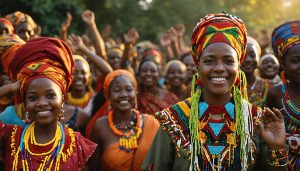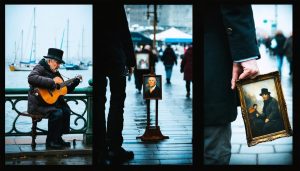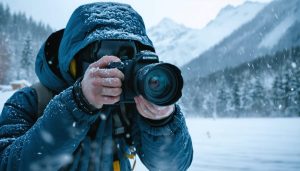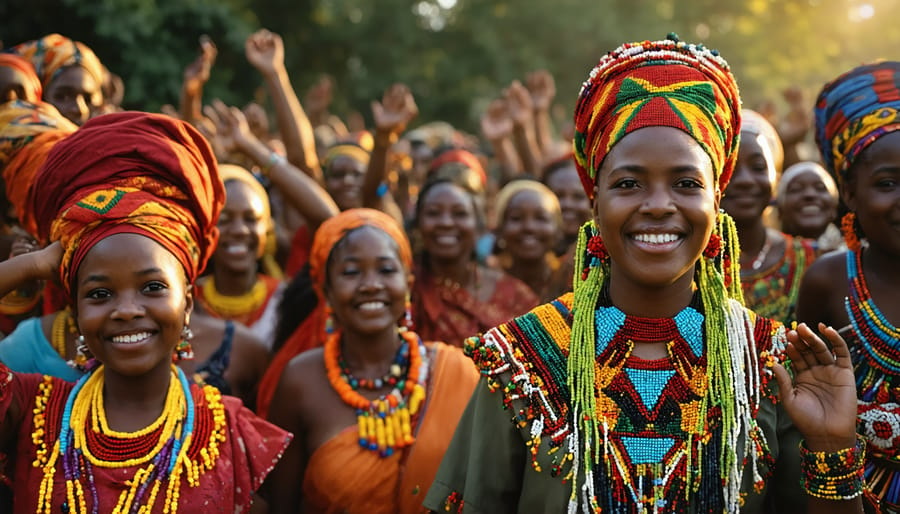
Through the lens of diaspora photography, we document the profound journeys of communities scattered across continents, weaving visual narratives that bridge generations and geographies. By focusing on reclaiming cultural narratives, photographers capture both the universal experience of displacement and the uniquely personal stories of cultural preservation.
Diaspora photography demands a delicate balance between technical precision and cultural sensitivity. The most compelling images emerge when photographers immerse themselves in communities, building trust before raising their cameras. Whether documenting traditional ceremonies in natural light or creating environmental portraits that speak to the duality of immigrant lives, these stories require careful consideration of composition, timing, and context.
The power of diaspora photography lies in its ability to challenge stereotypes while honoring authentic experiences. Modern digital cameras excel at capturing the nuanced lighting conditions of indoor gatherings and the vibrant colors of cultural celebrations, but the technical tools must serve the story, not overshadow it. Through thoughtful framing and moment selection, photographers can create visual narratives that resonate across cultural boundaries while maintaining the dignity and agency of their subjects.
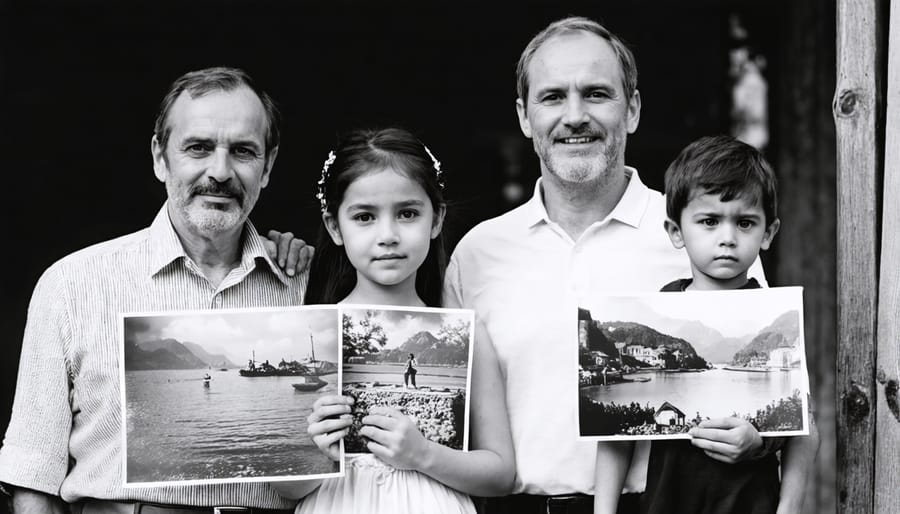
The Visual Language of Displacement
Technical Approaches to Cultural Documentation
When documenting cultural heritage and diaspora stories, your technical approach can make the difference between capturing authentic moments and missing their essence. A versatile zoom lens, typically 24-70mm, offers the flexibility to move from intimate portraits to wider environmental shots without disrupting natural interactions. Prime lenses, especially 35mm or 50mm, excel in low-light conditions common in indoor cultural ceremonies and family gatherings.
Consider shooting in aperture priority mode (A/Av) with a wider aperture (f/2.8-f/4) to create a shallow depth of field, helping isolate subjects while maintaining environmental context. For candid moments, silent shooting modes on mirrorless cameras prove invaluable, allowing you to capture genuine expressions without drawing attention.
Natural light should be your primary source whenever possible. Position subjects near windows or in doorways to utilize soft, directional light that enhances facial features while preserving mood. When artificial lighting becomes necessary, opt for bounce flash or diffused continuous LED panels to maintain the authenticity of the scene.
For cultural events and celebrations, faster shutter speeds (1/250 and above) help freeze motion while maintaining image clarity. Remember to shoot in RAW format to preserve maximum detail and allow for cultural-sensitive color grading in post-processing, especially important when accurately representing skin tones and traditional clothing colors.
Keep your camera settings ready for quick transitions between indoor and outdoor scenes. A higher ISO capability (1600-3200) with good noise handling is essential for maintaining image quality across varying lighting conditions without compromising the spontaneity of authentic moments.
Creating Visual Narratives
Visual storytelling in diaspora photography requires careful attention to both sequence and theme to create a cohesive narrative. Start by identifying the core elements of your story – whether it’s the celebration of cultural traditions, the challenges of adaptation, or the blending of old and new worlds. These themes should flow naturally through your image selection and arrangement.
When sequencing your images, think cinematically. Open with a strong establishing shot that sets the context, then layer in detailed moments that build upon each other. For instance, you might begin with a wide shot of a cultural celebration, followed by intimate portraits of participants, and finally close-up details of meaningful objects or symbols.
Consider using visual motifs that repeat throughout your series – perhaps traditional textiles, family heirlooms, or architectural elements that bridge homeland and adopted country. The key is to maintain visual consistency while allowing each image to contribute something unique to the story.
Pay special attention to transitions between images. Look for visual connections – similar colors, shapes, or compositions – that create a natural flow from one photograph to the next. This careful sequencing helps viewers understand the deeper narrative of diaspora experiences without relying on explicit explanation.
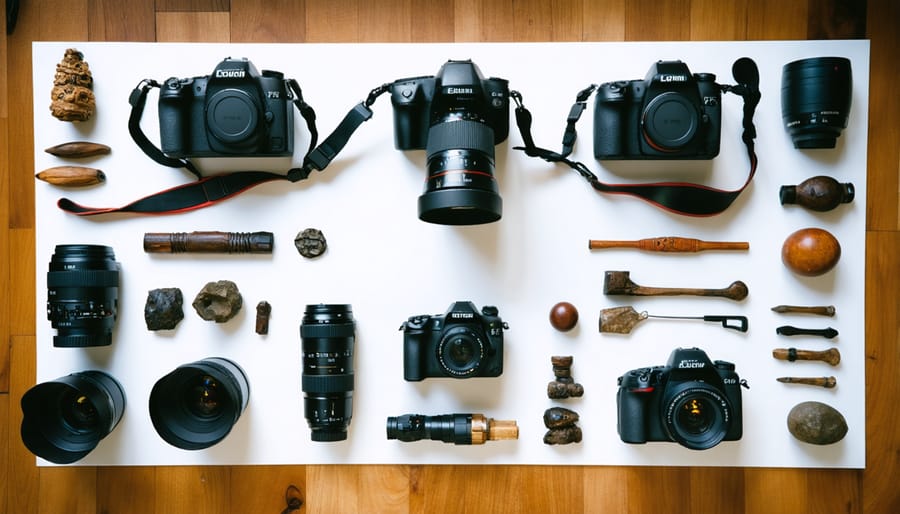
Equipment Considerations for Cultural Documentation
Choosing the Right Camera System
When documenting diaspora stories, your choice of camera system can significantly impact your ability to capture authentic moments and connect with your subjects. While any camera can technically work, certain features prove particularly valuable for this style of cultural documentation techniques.
Mirrorless cameras have become increasingly popular for this work, offering a compact form factor that helps maintain a less intimidating presence when photographing in intimate community settings. Their silent shooting modes are particularly valuable during cultural ceremonies or quiet moments of reflection.
DSLR systems, while larger, often excel in low-light conditions common in indoor cultural spaces and evening celebrations. Their robust battery life and extensive lens compatibility make them reliable choices for extended documentary projects.
For more candid situations, high-end compact cameras can be ideal. Their discretion allows for natural, unposed moments while still delivering professional-quality images. Look for models with good dynamic range to handle challenging lighting situations common in documentary work.
Key features to prioritize include:
– Fast and accurate autofocus for capturing spontaneous moments
– Good high-ISO performance for available light shooting
– Weather sealing for outdoor cultural events
– Dual card slots for immediate backup of irreplaceable moments
– Articulating screen for shooting from different perspectives without drawing attention
Remember, the best camera is one that feels natural in your hands and allows you to focus on building trust with your subjects rather than fiddling with controls.
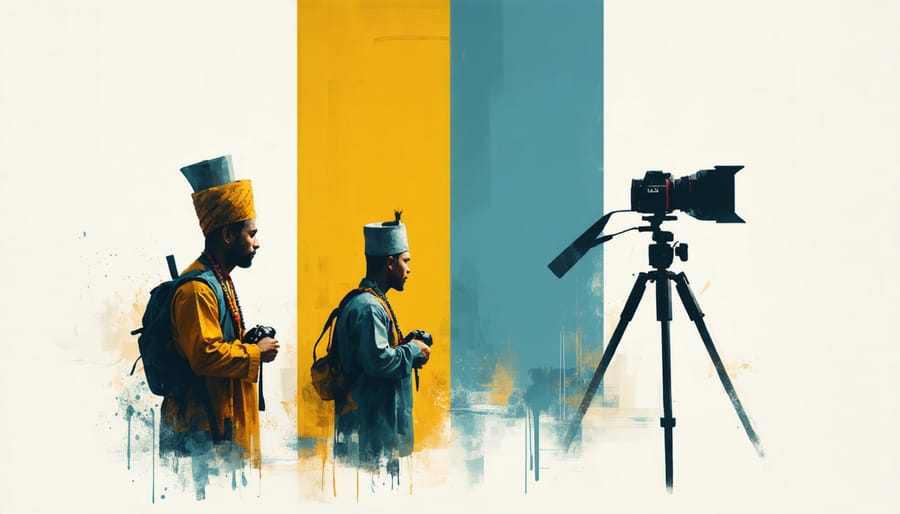
Essential Lenses for Storytelling
When documenting diaspora stories, your lens selection can significantly impact how you capture both intimate moments and broader cultural contexts. A versatile 24-70mm zoom lens serves as an excellent starting point, offering flexibility for both environmental portraits and detail shots of cultural artifacts. This lens range allows you to move seamlessly between capturing family gatherings and documenting traditional ceremonies without constantly changing equipment.
For more intimate storytelling, a 50mm prime lens (often called a “nifty fifty”) proves invaluable. Its natural perspective closely matches human vision, making it perfect for candid portraits and everyday life scenes. The wide aperture typically found in these lenses also excels in low-light situations, common in indoor cultural celebrations or traditional ceremonies.
When photographing cultural spaces and architecture, a wide-angle lens (16-35mm) helps convey the grandeur of religious buildings, community centers, and cultural events. This perspective allows viewers to feel immersed in the space while capturing the context that shapes diaspora experiences.
For detailed documentation of cultural artifacts, traditional dress, or food preparation, a macro lens becomes essential. These specialized lenses reveal intricate patterns in textiles, delicate jewelry details, and the subtle textures that make each cultural item unique.
Remember that while technical capabilities matter, the most important aspect is choosing lenses that let you work unobtrusively and respectfully within communities, maintaining authentic documentation without disrupting natural moments.
Ethical Considerations in Diaspora Photography
Documenting diaspora communities requires more than just technical expertise – it demands a deep understanding of cultural sensitivities and ethical responsibilities. As photographers, we must approach these stories with respect, awareness, and a commitment to ethical representation in photography.
First and foremost, obtain informed consent from your subjects. This means clearly explaining how and where their images will be used, and respecting their right to decline being photographed. Remember that some communities may have cultural or religious restrictions regarding photography, or may feel vulnerable due to their displacement status.
Consider the power dynamics at play. As photographers, we often hold privilege in these situations – whether through our equipment, mobility, or social status. It’s crucial to approach communities as collaborators rather than subjects, involving them in decisions about how their stories are told.
Context matters immensely. Avoid oversimplifying complex narratives or reinforcing stereotypes through your imagery. Take time to understand the historical and cultural background of the community you’re documenting. This might mean conducting research, speaking with community leaders, or working with cultural advisors.
Be mindful of your visual choices. While dramatic images of hardship might attract attention, consider whether they serve the community’s interests or merely exploit their situation. Look for opportunities to capture dignity, resilience, and joy alongside the challenges.
Questions to ask yourself before pressing the shutter:
– Does this image respect the subject’s dignity?
– Am I perpetuating or challenging stereotypes?
– Have I provided enough context for viewers to understand the larger story?
– Would I be comfortable showing this image to the person or community I’ve photographed?
Remember that diaspora communities aren’t just subjects for your portfolio – they’re people sharing their lives and experiences with you. Approach this work with humility, responsibility, and a commitment to doing no harm through your photography.
Post-Processing for Cultural Authenticity
When post-processing diaspora photography, striking the right balance between aesthetic enhancement and preserving cultural authenticity is crucial. Start by approaching color grading with sensitivity to cultural significance. For instance, certain colors may hold deep religious or traditional meaning, so avoid dramatic shifts that might alter their symbolic value.
Consider skin tones as a priority. Many standard presets aren’t optimized for diverse skin tones, which can lead to unnatural results. Create custom adjustment layers specifically for skin tone preservation, paying particular attention to highlights and shadows that complement rather than wash out natural complexions.
When editing traditional clothing and textiles, maintain the original vibrancy and patterns. Avoid over-saturation that might make traditional garments appear costume-like or theatrical. Instead, focus on subtle contrast adjustments that enhance textile details while keeping their authentic appearance.
For environmental portraits and documentary shots, resist the temptation to remove elements that might seem “messy” to Western aesthetic standards. Things like street vendors, religious symbols, or community gatherings are often integral to the cultural narrative. Rather than eliminating these elements, use careful dodging and burning techniques to guide viewer attention while maintaining the scene’s authenticity.
In architectural and interior shots of cultural spaces, be mindful of white balance adjustments. Many sacred spaces use specific lighting that carries cultural significance. Maintain the original ambient quality while making minimal technical corrections for exposure.
When batch processing multiple images from cultural events or ceremonies, develop a consistent editing approach that respects the chronological and cultural flow of the event. Create custom presets that enhance without overpowering, ensuring that the visual story remains true to the community’s lived experience.
Remember that your role as a photographer is to document and enhance, not to reimagine or reinterpret cultural elements through a different cultural lens. Keep adjustments subtle and purposeful, always prioritizing cultural integrity over trending aesthetic styles.
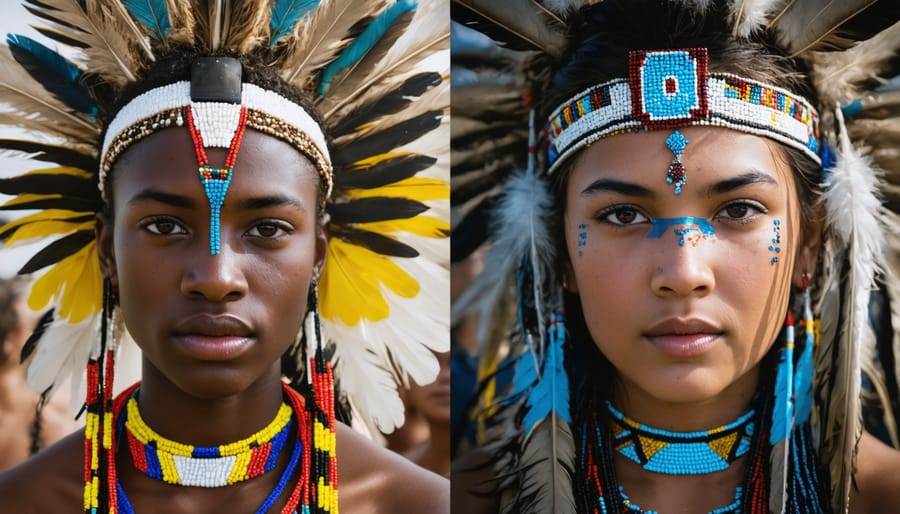
Documenting diaspora stories through photography is a profound responsibility that requires both technical excellence and deep cultural sensitivity. As we’ve explored throughout this article, successful diaspora photography goes beyond merely capturing images – it’s about preserving memories, bridging generations, and telling stories that might otherwise go untold.
Remember that every photograph you take of a diaspora community becomes part of their historical record. Take time to develop relationships, understand cultural nuances, and earn trust before raising your camera. Your technical skills – from composition to lighting – should serve the story rather than overshadow it.
Consider working collaboratively with your subjects, allowing them to guide the narrative and share what matters most to their community. Whether you’re documenting your own diaspora experience or someone else’s, approach each session with respect, patience, and genuine curiosity.
The best diaspora photography emerges from a balance of technical precision and emotional authenticity. Take time to master your equipment, understand available light, and perfect your post-processing workflow – but never at the expense of genuine human connection.
As you embark on your own diaspora documentation projects, remember that you’re not just creating images; you’re preserving cultural heritage for future generations. Approach this responsibility with the care, creativity, and technical excellence it deserves, and you’ll create meaningful work that resonates far beyond the frame.

